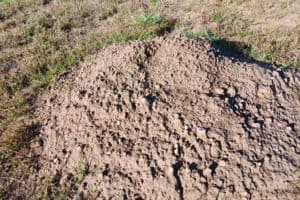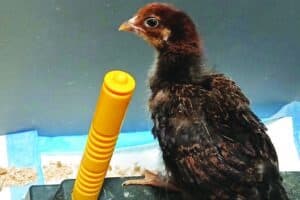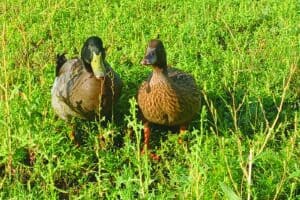Longtime local journalist Bill Radford and his wife, Margaret, live on 5 acres in the Falcon area with ducks, chickens, rabbits, dogs, cats, two noisy parrots, goats, a horse and a blind mule. Contact Bill at billradford3@gmail.com.
While I won’t cheer the end of summer this month, I do long for the end of another season: fly season.The flies started showing up in the barn and in the house in July, and invaded in full force in August. Several types of flies found in Colorado bite people and can be serious annoyance pests, including black flies, biting midges and deer flies; according to a fact sheet by Colorado State University Extension.Inside, we’ve been overrun by your basic house fly. In the barn, it seems to be stable flies that have aggravated our horse and mule. Also known as the biting house fly, the stable fly is “a blood-feeding pest known to attack almost any kind of warm-blooded animal,” the CSU Extension fact sheet states. If you get bit by one, it’s likely to be around the ankles. The immature stable fly, or maggot, breeds in many kinds of moist, decaying organic matter.A 1911 edition of ìColorado Medicine, The Journal of the Colorado State Medical Societyî is a bit more graphic: Flies “are born in filth; they feed on filth; they walk in filth.”So one way to prevent flies is to deny them that filth. Inside, keep countertops spotless and garbage containers tightly closed and regularly emptied. Outside, manure management is critical ñ- and challenging, when you have chickens, ducks, equines, rabbits and so on, like we do.We’ve assembled quite an arsenal against flies:Fly traps: We have an assortment, including two sticky kinds: Starbar’s Bite Free Stable Fly Trap, which promises to trap “over 8,000 biting stable flies” with “360 degrees of effective trapping surface,” and Starbar’s Fly Stik, which comes with dozens of images of flies on the sticky surface ñ- maybe so it doesn’t look as nasty when real flies are attached to it. We also have bottle-shaped traps that hold a mixture of water and “fly attractant” in which the flies drown. The ghastly smelling fly attractant used to come in tiny bottles and was easy to spill on your hands; now it comes in a water-dissolvable pouch that is easier to handle.Fly spray: There are different types, from the spray you use directly on horses for warding off flies to sprays you use in the horses’ stalls ó or in the house ñ- to kill the flies. (You can also use SWAT, “a gentle insect repellent ointment,” to protect wounds and abrasions on a horse from the bites of flies. And you can have your horse wear a fly mask to protect its eyes and ears.)Fly predators: These are tiny insects designed to destroy the next generation of flies in their immature pupa (cocoon) stage. You distribute them on manure; they’re biteless, stingless and never become pests themselves, according to Spalding Labs.Ortho Home Defense Fly Bait Decal: This is the newest weapon in our arsenal. The decals go on windows (or, in our case, on our sliding glass door). Flies are attracted to the decal, eat the coating on it and die shortly after. I was skeptical when my wife bought some, but they have resulted in a small pile of dead flies next to the door each day.Fly swatter: This is the oldest weapon in our arsenal. At times, a murderous rampage with a fly swatter seems to be the only answer against our winged invaders. We try to have a live-and-let-live philosophy, but the flies are annoying, painful to the animals and can carry disease.So, the bottom line is shoo fly, don’t bother me.And take those hordes of omnipresent, garden-ravaging grasshoppers with you, please.






